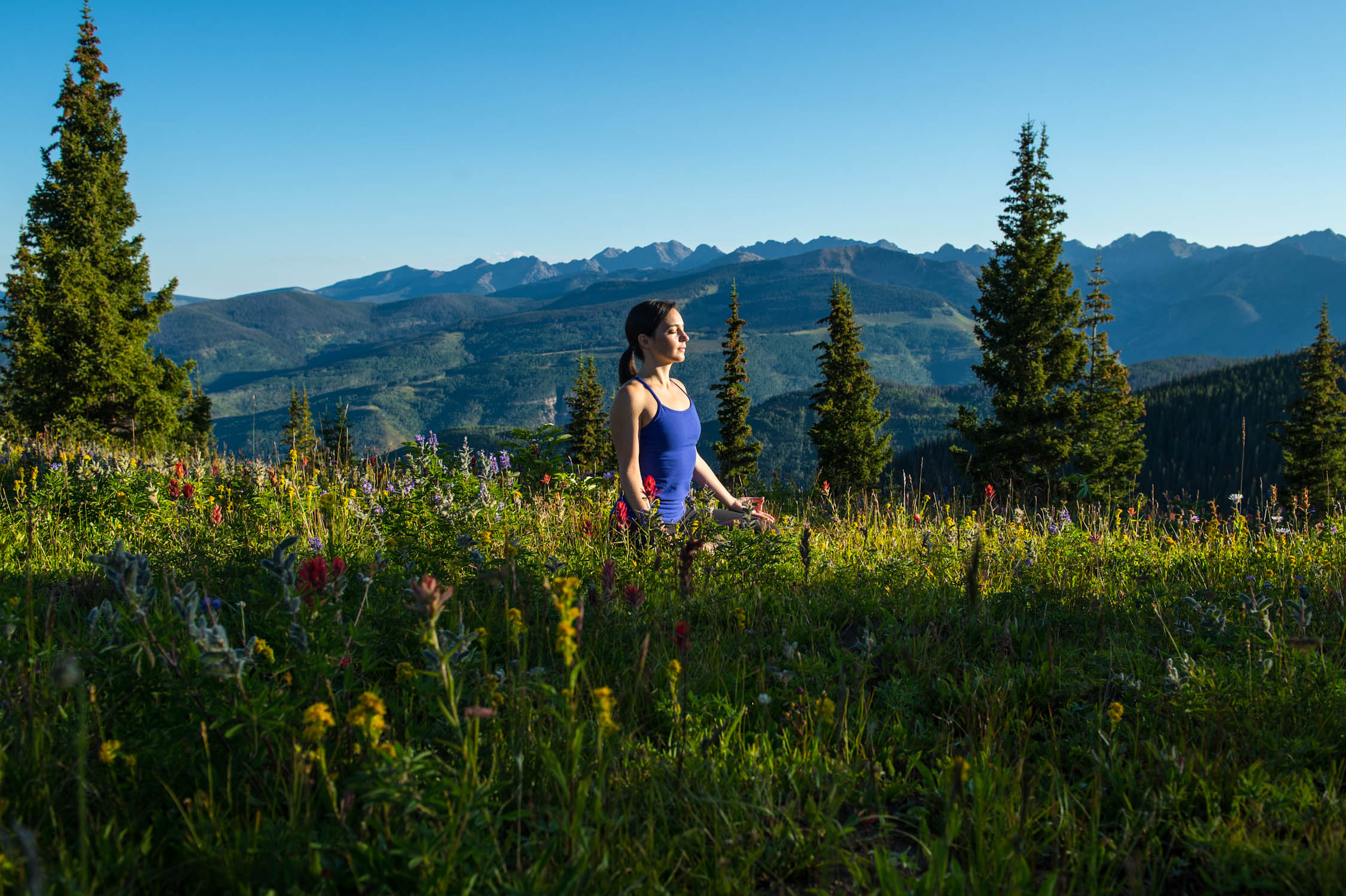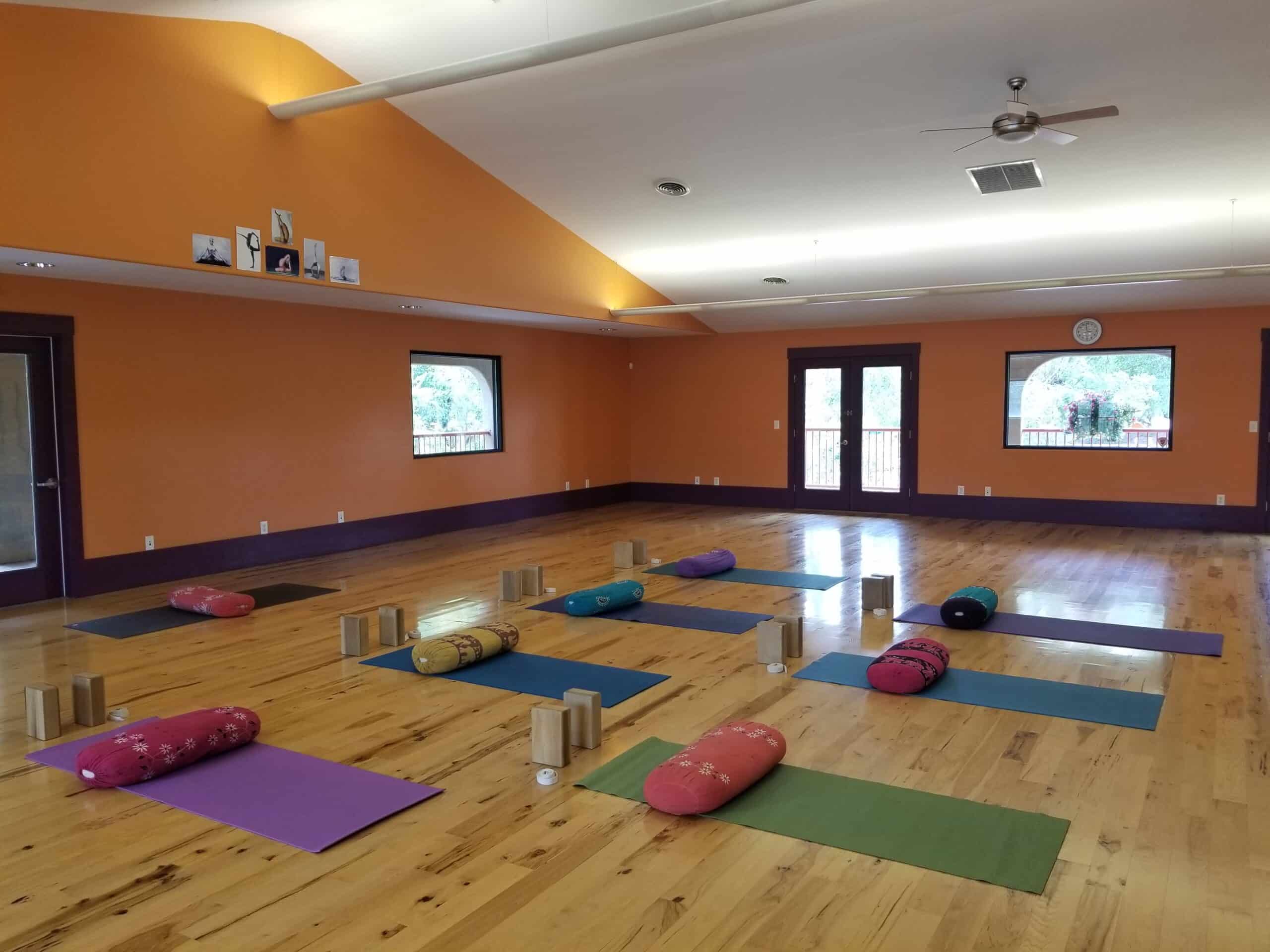Yoga’s Deep Green Roots : A Path for Eco-Conscious Living | By Carah Wertheimer
Originally published in the Winter + Spring 2019-2020 issue.
Ever wonder how Patanjali, author of the ancient Yoga Sutras, might feel about synthetic yoga mats, stretchy yoga pants and the ever-increasing array of yoga products and accessories?
Written more than 1,000 years ago, the Yoga Sutras present an eight-limbed path of ethical living and spiritual awakening that goes far beyond downward dog.
“Yoga in its fullest sense is made up of all eight limbs, not just asana, which is the postures. The yamas, the first limb, are rules on how you interact with other people, how you are in society. The niyamas, the second limb, are more about how you treat yourself,” says Nicolai Bachman, Colorado-based author of six books including “The Language of Yoga” and teacher of Sanskrit, yoga philosophy and Ayurveda.
Can yamas such as ahimsa (nonviolence), asteya (not stealing) and aparigraha (non-possessiveness) offer wisdom for today’s environmental crisis?
“Asteya means not taking anything that isn’t yours or that hasn’t been given to you. That goes hand in hand with aparigraha, which is not hoarding, not grasping. Part of our consumer lifestyle is consuming far more than the earth can sustain. It does involve actually stealing,” said Alakananda Ma, British-trained MD, Ayurvedic doctor and co-founder of Boulder’s Alandi Ashram and Ayurvedic Gurukula.
Our whole resource-extractive economy, Ma said, is often based on taking what’s not ours, whether it’s the labor of underpaid workers, land that belonged to Native Americans or animal habitats.
“It all violates asteya,” she says. “Aparigraha is more about not taking anything we don’t actually need. Aparigraha invites us to obtain and retain only what is necessary for us.”
Given our consumerist culture and media, the yamas are starting to sound pretty challenging. How can we apply these teachings and withstand the pressure to accumulate more and more?
“That’s where mindfulness comes in, right? Also, ahimsa is a really important part of it. The yamas are all working together because are we going to buy things that were made in sweatshops? Is that ahimsa? Are we going to buy things that’ll be here in an archaeological dig in 10,000 years’ time?” Ma says.
“When we let ahimsa govern every choice, that’s going to really help. Because of the way the Sanskrit language works, they’re using a negative to mean a positive. So, ahimsa means much more than nonviolence, it means love,” she says.
Speaking of Sanskrit, Bachman says that the idea of selflessness is actually built into Sanskrit grammar.
“In English, ‘I’ is first person, ‘you’ is second person, and ‘it’ is third person. In Sanskrit it’s flipped. So ‘I’ is the last person, ‘you’ is the second person, and ‘he/she/it’ is the first person,” he explains. “This goes down deep into the core, the very beginning of the tradition.”
It’s all comes down to acting in a way that’s not just good for you, Bachman says, but that’s good for everything and everybody.
It doesn’t get any greener than that.
GREEN LIVING TIPS FOR ECO-MINDED YOGIS
Being sustainability minded means pausing to ask the sometimes inconvenient, yet thoughtful questions.
“We can think when we buy any item – does this harm, does this benefit? Will this end up in the landfill? Who made it? What’s it done to the earth?” Ma says.
“Purchase things consciously as much as you can, eat as low on the food chain as you can,” Bachman says. “What you buy makes a huge difference.”
However, Ma acknowledges that going green in today’s world can be tricky.
“At a certain point you have to just live your life and tackle it on another level, like with the corporations, because they need to give us better solutions. But at the same time there’s a mindfulness of ‘Does it benefit?’” Ma says.
ROCKING ECO-GREEN YOGA: STUDIO GAIA
Sustainability isn’t only an individual practice, it’s also communal — just look at Studio Gaia in Edwardsville, Illinois.
Founder Sally Burgess, who recently completed a master’s in environmental policy communication, has long considered environmental awareness an essential aspect of yoga practice and tradition. Burgess has created ways to encourage sustainable living, as well as a deeper relationship with the Earth within her studio through teacher training electives.
“If you think about the language and the asanas of yoga — tree pose, dolphin, downward facing dog — the poses are built around nature. We try to bring in some of the mythology around yoga, with tree pose. Maybe we talk about sending down those roots and how trees provide protection for us and shelter,” Burgess says.
“I renamed my studio ‘Studio Gaia’ in 2012 because it didn’t make any sense to me for us to focus on having beautiful poses if the Earth is on fire. We have as a touchstone sustainability of mind, body, spirit in equal measure with the planet,” she says.
Studio Gaia has a popular freecycle clothing exchange rack to encourage reuse. Even people who aren’t customers can come in and take clothes for free. The studio also offers classes on making your own non-toxic essential oil cleaning products and has screened environmental movies.
For a few years the studio ran a program called Bags Without Borders, which offered reusable totes in exchange for plastic bags until the program was taken over by a local group. Folks who sent in photos of themselves using the bags received free yoga classes. One of the yoga teachers turned the plastic bags into yarn and made yoga mats, straps and bags.
But it doesn’t stop there.
“We support local farmers, we’re very vocal about that. We highlight them in our newsletter and in our Facebook and Instagram posts, we teach free yoga at the Farmers Market every Saturday. We’re a drop-off point for one of our local CSAs,” Burgess says.
Burgess finds it mind boggling that the yoga world is not more focused on the environment.
“One of the main things we do in yoga is the breath, and what are we breathing in? Air. And what’s in the air? Carbon dioxide. To me there are so many different connections,” she says.
But balancing ecology and yoga training takes some skill.
“We want people to come in and have a good experience. If they’re inundated with educational messages about the environment, that can take away from their experience. Also, we’re very mindful that people are often healing from things,” Burgess says “It’s a balancing act.”
Burgess encourages students and studios alike to be mindful of their impact.
“Look for environmentally-friendly yoga mats that will last a long time. You don’t need a new mat every year, think about that,” she says. “Yoga clothes – do you need so many? Do you need a new outfit every day?”
Studios can consider their supplies, such as replacing plastic yoga blocks with cork ones.
Yoga may present some problems, but it also offers some answers.
Photo by Blake Weyland.
 Carah Wertheimer is a Boulder-based freelance journalist focusing on health, food and sustainability. A former holistic health practitioner, she brings an unusual depth and breadth of understanding to alternative health and wellness topics. Her work has appeared in National Geographic, The Daily Beast, Denver Post, MedTruth, Boulder Daily Camera, Longmont Times-Call, Yellow Scene Magazine and elsewhere. Notable interviews include Olympic gold medalist skater Meagan Duhamel, celebrity backpacker Andrew Skurka, New York Times bestselling author Izabella Wentz and (now governor) Jared Polis.
Carah Wertheimer is a Boulder-based freelance journalist focusing on health, food and sustainability. A former holistic health practitioner, she brings an unusual depth and breadth of understanding to alternative health and wellness topics. Her work has appeared in National Geographic, The Daily Beast, Denver Post, MedTruth, Boulder Daily Camera, Longmont Times-Call, Yellow Scene Magazine and elsewhere. Notable interviews include Olympic gold medalist skater Meagan Duhamel, celebrity backpacker Andrew Skurka, New York Times bestselling author Izabella Wentz and (now governor) Jared Polis. Asivana products are made from FSC-certified cork and sustainably harvested natural rubber. Their products are naturally antimicrobial [...]

Subscribe to Our Tribe
Stay up to date with Y+L News, Events and special announcements.










